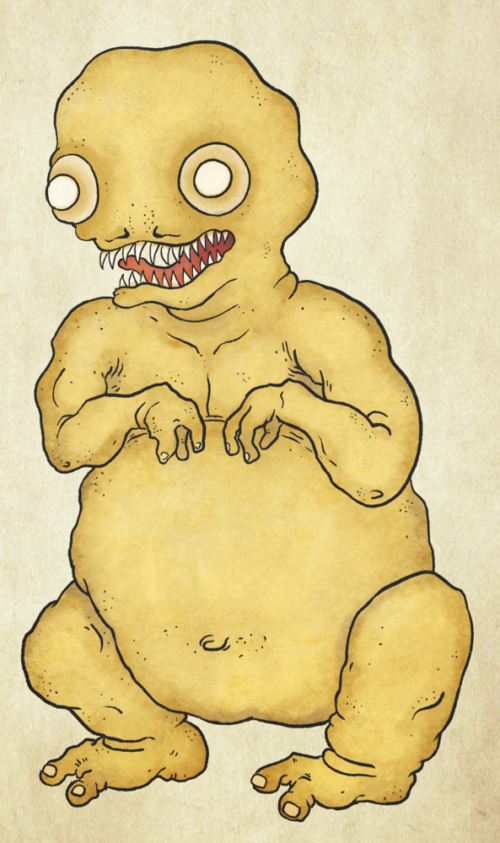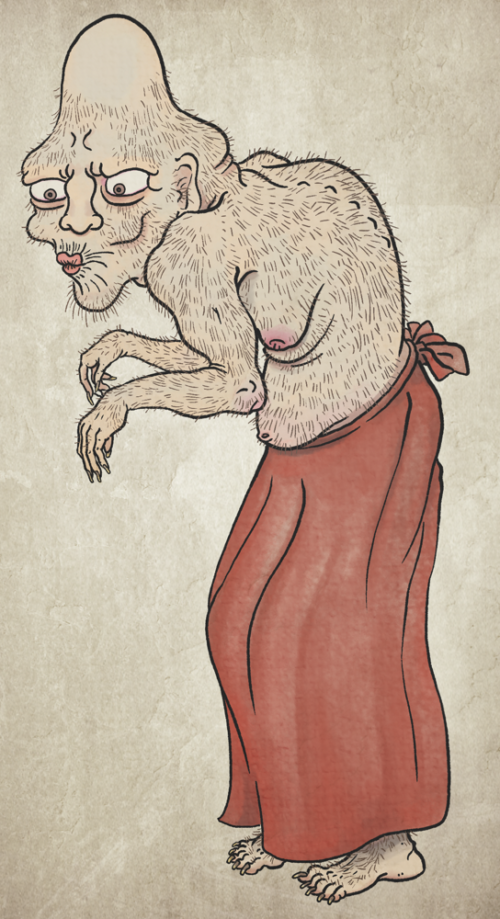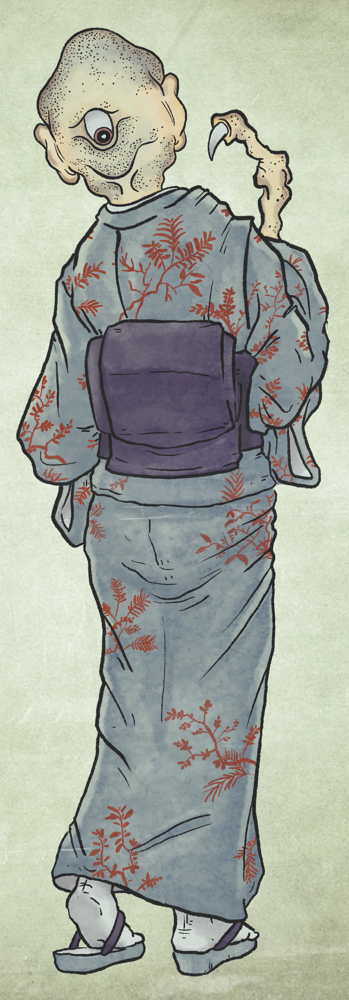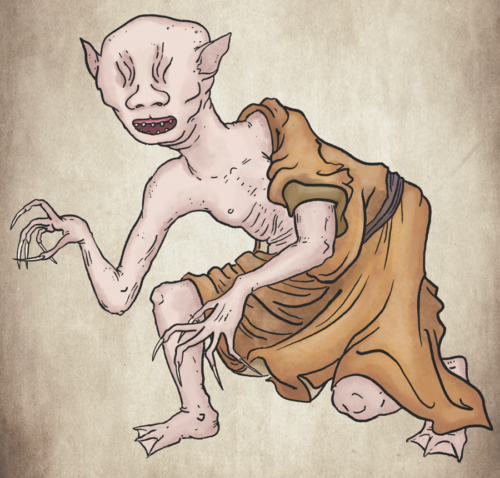If you are familiar with Japanese food, then you probably know about kinako. It’s a yellow ochre-ish colored powder with a slightly sweet flavor. It’s made from dried and ground up roasted soy beans. It’s a popular ingredient in traditional Japanese sweets, and it tastes fantastic on mochi! Well, what if I told you there was even a yokai for that!
Read on!

Kinako bo
Kinako bo
“kinako monk”
Kinako bo appears in the Matsui Bunko Hyakki yagyo emaki. It can also be found in other yokai scrolls like the Bakemono tsukushi emaki (where it goes by the name kasukurai). However, all depictions of it are pictures only. There are no stories or legends of this yokai which survive today. (Were there ever any? We don’t know.)
What’s more, the only pictures of this yokai show it from the neck up. We don’t get any glimpse of its body. So we can only guess what it looked like below the neck based on the shape of its head. (Somehow this makes me feel like a paleontologist who has to extrapolate the entire shape of a dinosaur based on a single bone or a tooth.) My favorite book by yokai-ologist Murakami Kenji describes its body as “buyo buyo,” or soft and flabby, which is why I gave it the body you see here.
Whatever its body looked like, it’s a pretty intimidating-looking yokai. Those saucer-like eyes and bright yellow skin certainly give it a horrific appearance. And the sharp teeth in its mouth! It’s truly monstrous! It makes me want to know more about it.
So how did something so sweet and wonderful turn into a yokai? It’s a mystery! Soy beans are of course used in rituals like the bean-tossing ceremony at Setsubun. Could some of the evil or magic from the oni rub off on to the beans? Maybe if soy beans which are used to ward off oni are then ground and turned into kinako, they turn into a kinako bo? Or, maybe this is a yokai who really loves to eat kinako himself? Is it soft and flabby because it ate too much kinako mochi? It’s anybody’s guess.
All this talk about kinako has made me hungry!
Want more yokai? Visit yokai.com and check out my yokai encyclopedias on amazon.com! Still want more? You can sign up for my Patreon project to support my yokai work, get original yokai postcards and prints, and even make requests for which yokai I paint next!






